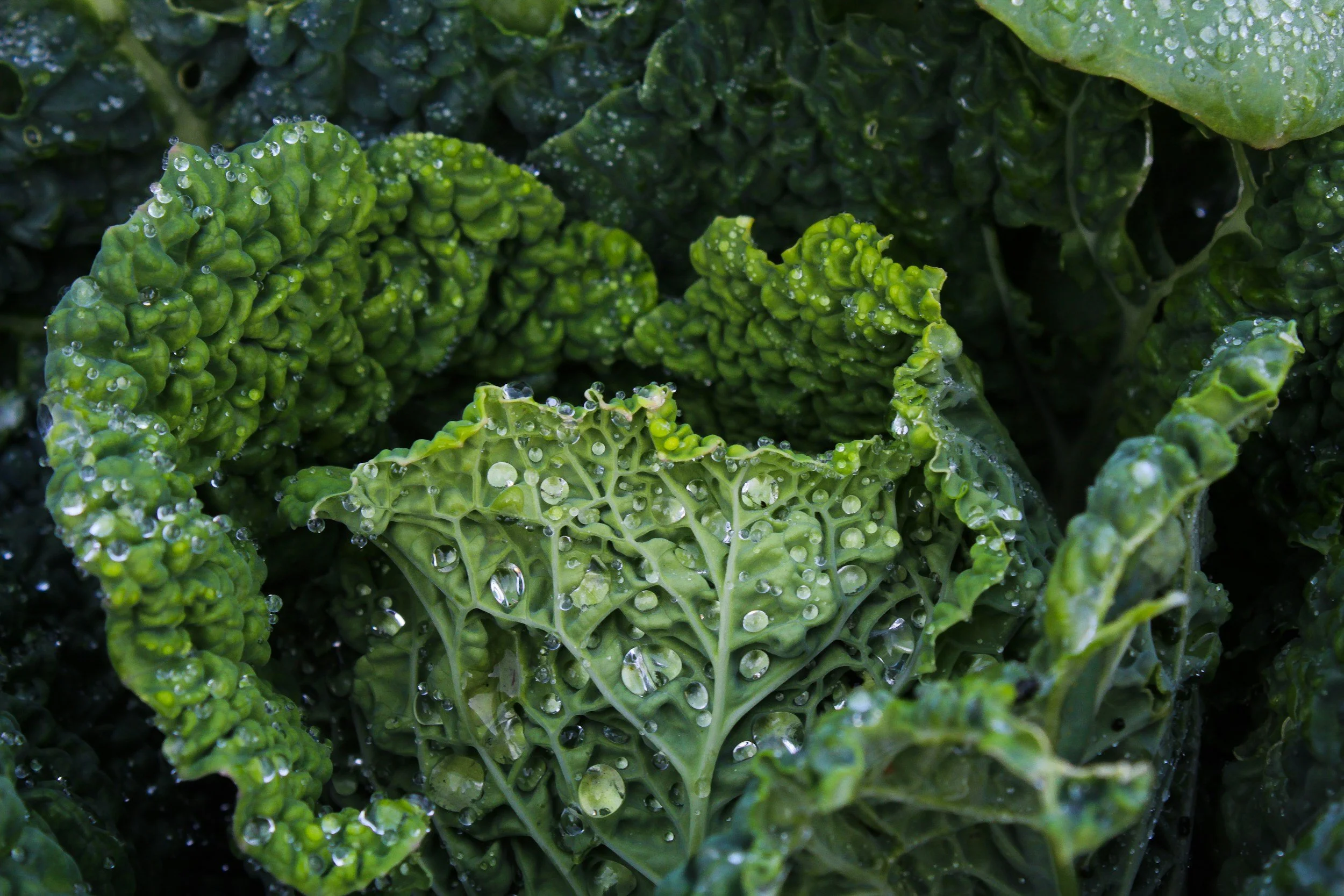Adenomyosis and Perimenopause: Why Symptoms Can Suddenly Get Worse (and Where Food Fits In)
Many women are told they have adenomyosis in their 30s or 40s, then notice everything seems to get worse just as perimenopause begins:
Heavier periods
More cramping and pelvic pain
More fatigue and brain fog
Feeling like the body is “out of control”
This can be confusing, because we often hear that “oestrogen‑driven conditions get better after menopause”. So why do adenomyosis and perimenopause sometimes feel like the perfect storm?
This article explains, in simple terms:
What adenomyosis is
What happens to hormones in perimenopause
Why adenomyosis symptoms can flare in the 40s
How diet (including soy, cruciferous vegetables and sulforaphane‑rich foods) may play a supportive role
This is general information only and does not replace medical advice. Always talk with your GP or gynaecologist about your own situation.
What Is Adenomyosis?
Adenomyosis is a common, non‑cancerous condition of the uterus. It happens when the tissue that normally lines the inside of the uterus (the endometrium) grows into the muscle wall of the uterus (the myometrium).
This can lead to:
Heavy, prolonged periods
Strong cramping or pelvic pain
A feeling of “fullness” or pressure in the pelvis
Pain with intercourse for some women
Fatigue and iron deficiency from ongoing blood loss
Research suggests adenomyosis develops when the inner lining is repeatedly pushed into the muscle layer at the junction between the two. Over many cycles of bleeding, contractions and repair, this boundary can weaken, especially in a high‑oestrogen environment.
Adenomyosis is very hormone‑sensitive. The cells in the uterine muscle can:
Have more oestrogen receptors than normal muscle
Make more aromatase, an enzyme that produces extra local oestrogen
Grow more when exposed to oestrogen in lab studies
This is why changes in hormones during perimenopause can have such a big impact on adenomyosis symptoms.
What Happens to Hormones in Perimenopause?
Perimenopause is the transition phase leading up to menopause. It can last several years.
During perimenopause:
The ovaries don’t switch off overnight – they become more erratic
Oestrogen levels fluctuate: sometimes high, sometimes low
Progesterone levels often drop earlier and more consistently than oestrogen
Many women experience:
Cycles where oestrogen is relatively high compared to progesterone
Irregular ovulation
Changes in bleeding patterns (heavier, longer, or closer‑together periods)
From a biological point of view, this can create a high‑oestrogen environment at times – exactly the kind of setting that can drive adenomyosis progression and symptom flares.
Make it stand out
Hormonal chaos rollercoaster?
Why Adenomyosis Can Get Worse in Perimenopause
When we put this together:
Adenomyosis tissue is very sensitive to oestrogen and can make extra oestrogen locally
Perimenopause often brings oestrogen swings and lower progesterone (which usually helps stabilise the uterine lining)
Repeated cycles of heavy bleeding, strong contractions and repair further stress the junctional zone
The result can be:
Heavier, more irregular bleeding
More pelvic pain and cramping
More fatigue and iron depletion
So even though after menopause (once periods have fully stopped and oestrogen levels are low) adenomyosis may settle, the years leading up to menopause can be a time of worsening symptoms.
This is not “in your head” – it reflects real changes in hormone patterns and how the uterine tissue responds.
Where Does Diet Fit In?
Food cannot cure adenomyosis or switch it off. It does not replace medical treatments such as:
Hormonal IUDs (e.g. Mirena)
Progestin therapy
GnRH analogues or antagonists
Aromatase inhibitors
Uterus‑sparing procedures (e.g. UAE, RFA, HIFU, adenomyomectomy)
Hysterectomy in some cases
These are the main evidence‑based medical and surgical options.
However, a perimenopause‑friendly diet can be a supportive tool alongside medical care, especially for:
Hormone‑related symptoms (hot flushes, night sweats, fatigue)
Inflammation
Overall energy, gut health and blood sugar balance
Two food groups that have been studied in women with hormone‑sensitive conditions are:
Soy foods
Cruciferous vegetables (like broccoli, cabbage, bok choy and kale)
Soy Foods and Menopausal‑Type Symptoms
Soy foods include:
Tofu and tempeh
Edamame (young soybeans)
Miso
Soy milk made from whole soybeans
Soy contains isoflavones, plant compounds that can gently bind to oestrogen receptors. They are much weaker than the body’s own oestrogen.
In a study of breast cancer survivors (many on hormone‑blocking medicines), women who ate more soy foods reported:
Fewer menopausal symptoms (such as hot flushes and night sweats)
Less fatigue
This does not mean soy treats cancer or adenomyosis. But it suggests that, even in women with very sensitive hormone backgrounds, moderate soy intake is generally considered safe and may help with some symptoms.
For women with adenomyosis in perimenopause, including 1–2 small serves of soy foods per day (if tolerated and approved by your doctor) can be a reasonable part of a hormone‑supportive diet.
Cruciferous Vegetables, Sulforaphane and Oestrogen Metabolism
Cruciferous vegetables include:
Broccoli and broccolini
Cabbage and Brussels sprouts
Bok choy and Chinese cabbage
Kale, rocket and other brassicas
These vegetables contain glucosinolates, which the body can turn into active compounds like sulforaphane.
When you chop, chew or lightly cook these vegetables, an enzyme reaction forms sulforaphane. In lab and animal studies, sulforaphane has been shown to:
Switch on pathways that help the body make its own antioxidant and detox enzymes
Influence enzymes that help the body process oestrogen
Affect cell‑signalling pathways involved in inflammation and cell growth
In the same breast cancer survivor study, women who ate more cruciferous vegetables had fewer menopausal symptoms overall.
Again, this is association, not proof. But it fits with other research showing that women who eat more vegetables and fruit often have fewer hot flushes and night sweats.
For women with adenomyosis and perimenopause symptoms, regularly eating cruciferous vegetables is a simple, low‑risk step that may:
Support how the body handles oestrogen
Provide fibre, vitamins and minerals
Help with general inflammation and metabolic health
What About Sulforaphane Supplements?
You may see online claims that sulforaphane is a “natural cancer treatment” or “natural hormone blocker”.
It’s important to be clear:
Most sulforaphane research is in cells or animals, or in very specific experimental settings
We do not have strong human trials showing that sulforaphane alone can treat adenomyosis or replace medical therapy
The safest way to use this information is to:
Focus on whole foods that naturally contain sulforaphane precursors (like broccoli, cabbage, kale and bok choy)
See them as part of a supportive lifestyle plan, not as a stand‑alone cure
If you are considering concentrated sulforaphane supplements, always discuss this with your GP or specialist first.
Putting It All Together: Practical Food‑Based Steps
If you’re dealing with adenomyosis and perimenopause, some practical steps (once your doctor is happy) might include:
Aim for vegetables at most meals
Add broccoli, bok choy or cabbage to stir‑fries
Include kale or rocket in salads
Include soy foods if appropriate for you
Tofu, tempeh, edamame, miso, soy milk from whole soybeans
Build a generally plant‑rich, whole‑food diet
Plenty of vegetables and fruit
Whole grains, legumes, nuts and seeds
Healthy fats like olive oil and avocado
Don’t rely on diet alone for severe symptoms
Heavy bleeding, severe pain or symptoms affecting your daily life need proper medical assessment
Diet is a support, not a replacement for medical care
This kind of approach can sit alongside medical treatments to support overall wellbeing during perimenopause.
When to Seek Help
If you notice that your adenomyosis symptoms are getting worse as your cycles become more irregular, it’s worth checking in with:
Your GP
Your gynaecologist
A practitioner experienced in perimenopause and adenomyosis
They can help you:
Check iron levels and other blood tests
Review options for managing bleeding and pain
Discuss whether hormonal options, IUDs or surgery are appropriate
Build a plan that includes both medical treatment and lifestyle support
About the author
Dr Laura Brooks is a chiropractor and women’s health practitioner based in Palmwoods on the Sunshine Coast. She has a wealth of experience in health and wellness and holds postgraduate training in women’s health medicine and perimenopause. Laura supports women with hormonal health, nervous system regulation and musculoskeletal concerns, with a particular interest in perimenopause, adenomyosis and period‑related pain.
This article is general information only and is not a substitute for individual medical advice.


